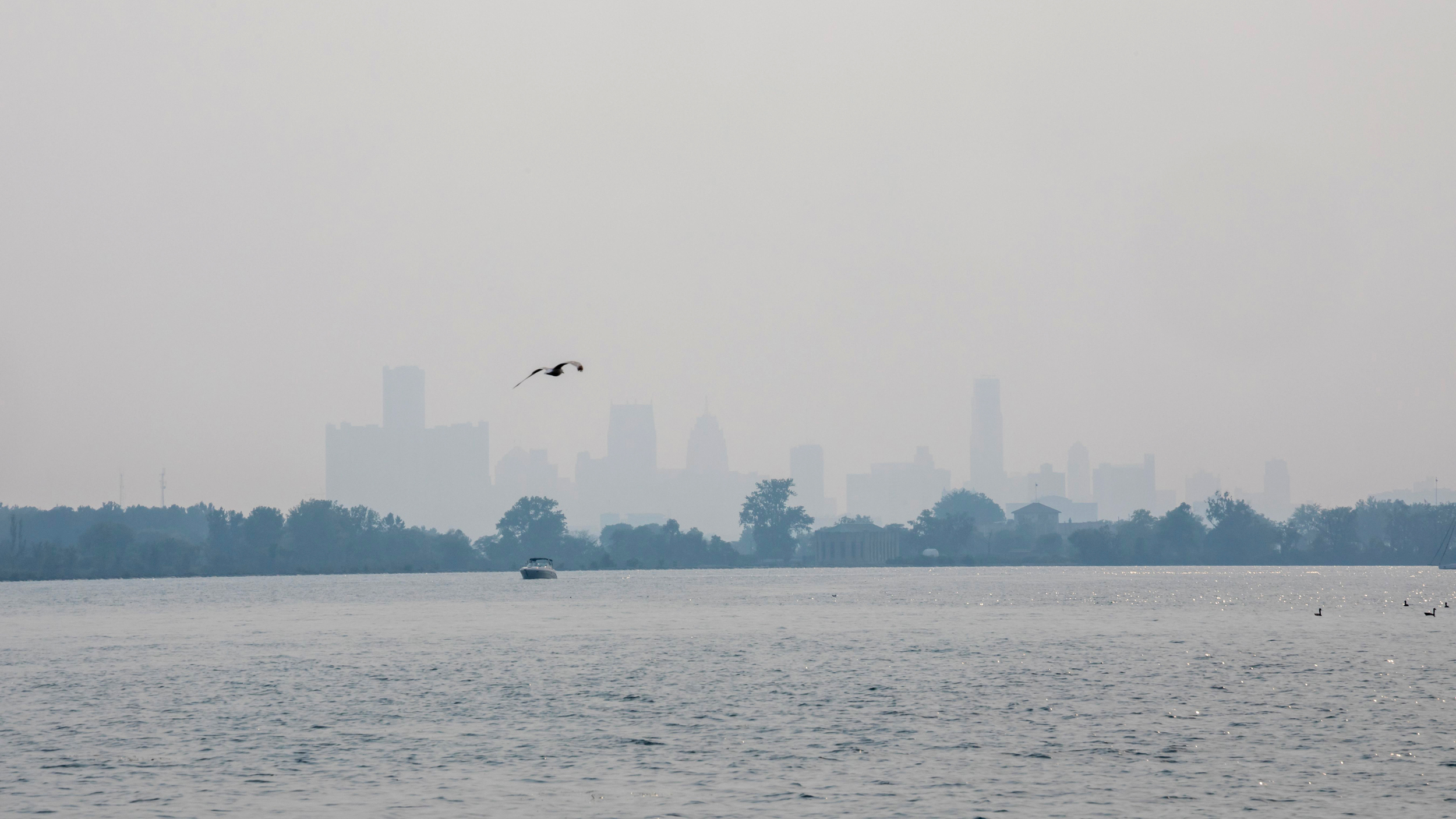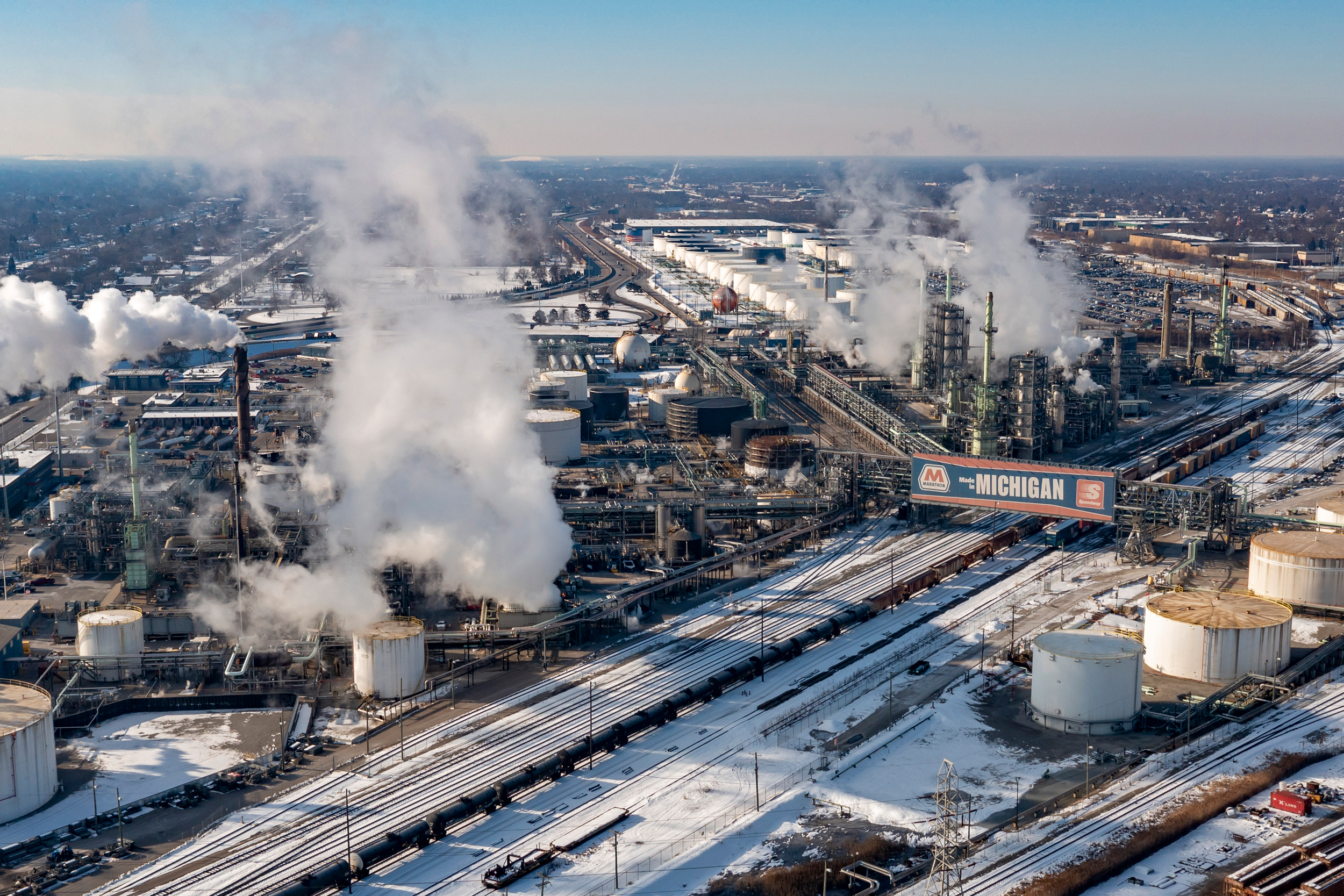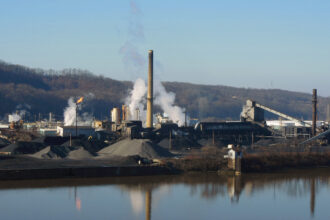In the Motor City, it’s more than just vehicle exhaust causing problems for people living with asthma. While pollution from vehicle emissions and manufacturing plays a role in exacerbating the condition, so do health care access issues and even smoke billowing down from recent wildfires in neighboring Canada.
The result is a perfect storm for the nearly 95,000 Detroit residents—approximately 15 percent of the city’s population—who live with the condition.
Asthma, while common, is not benign. When uncontrolled, the condition can keep people up at night coughing and send them to the emergency room with inflamed, narrowed airways making it difficult to breathe. The condition is also chronic, frequently affecting people from childhood up through old age, and requires frequent care to be kept under control, putting people who cannot see a doctor regularly at a major disadvantage.
Last year, Detroit was ranked No. 3 on the Allergy and Asthma Foundation of America’s annual Asthma Capitals report, which ranks the most challenging cities for residents with asthma. This year, it took the top spot.
“It’s never good to be number one when you’re on a report like this,” said John Dowling, coordinator of the Michigan Department of Health & Human Services’ Asthma Prevention and Control Program. “I don’t think anyone really likes seeing that.”
The September report evaluates cities by three criteria: asthma prevalence, emergency department visits due to asthma attacks and asthma-related deaths. Detroit has consistently been among the worst-ranked cities, says Hannah Jaffee, research director at the AAFA. This year, it had the second-highest asthma prevalence of any city in the U.S. and a large number of emergency department visits and deaths due to asthma, which propelled it into the report’s No. 1 position.
Despite the ranking, local leaders and researchers take heart in public health initiatives that they say are slowly moving the needle on reducing asthma triggers and improving access to specialized care in the city. But some experts worry climate change will quickly make life more difficult for people with asthma—especially as the Trump administration rolls back key air pollution regulations.
On the ground, asthma specialists are already noticing their patients’ conditions worsening.
“Each year it gets worse, and I’ve had a lot of patients come to my office with worsening asthma,” said Garen Wolff, an allergist and immunologist working in Detroit. “Because of the wildfires, the outdoors has become an indoor problem.”
Extreme weather events—including wildfires and severe storms—are becoming more common and intense due to climate change, which also worries some asthma experts. These events can increase levels of mold and smoke in the atmosphere. Meanwhile, warmer air can trap these pollutants at the ground level.

A warming climate and more greenhouse gases, like carbon dioxide, in the air also allow plants to pollinate for longer, which can intensify seasonal allergies and asthma symptoms.
“Anywhere that allergies are getting worse, either due to climate change or other factors, asthma gets worse,” said Purvi Parikh, an immunologist in the Allergy & Asthma Network, a Virginia-based nonprofit that supports asthma research and advocacy efforts. “That Detroit is now leading the country is very concerning, because this is not a place that’s known to have a very warm climate.”
With so many factors working against people with asthma in Detroit, the city’s efforts to mitigate the condition’s harms have had to cover a broad range of social and medical issues. Detroit’s 14.8 percent of residents with asthma is already higher than the Michigan average of 11.5 percent, but the difference is even more striking for some groups, said Beth Anderson, who tracks Michigan asthma data as a chronic disease epidemiologist at the Michigan Department of Health & Human Services.
Over 20 percent of people with a disability have asthma in Detroit, compared to the state average of 14.7 percent. For people below the poverty line, it is 31.9 percent in Detroit versus 13.5 percent on average in Michigan. And the most-stark difference is for Black residents: 75.9 percent live with asthma, compared to the Michigan average of 13.2 percent.
“Asthma is very multi-layered,” Dowling said. “There are just a lot of areas you have to address, and that makes it very challenging.”
This story is funded by readers like you.
Our nonprofit newsroom provides award-winning climate coverage free of charge and advertising. We rely on donations from readers like you to keep going. Please donate now to support our work.
Donate NowAdding to these challenges, the Trump administration has sought to roll back several key environmental protection measures. In March, Environmental Protection Agency Administrator Lee Zeldin announced the end of the “Good Neighbor Plan,” which protected millions of people from breathing polluted air in states downwind from power plants lacking pollution controls, and the “reconsideration” of the Mercury and Air Toxics Standards, which require coal and oil power plants to limit air pollution.
Through the end of March 2025, the EPA also accepted requests for “Presidential Exemptions” from Clean Air Act regulations—exemptions the administration may have solicited from industry groups, according to a recent investigation by the Environmental Defense Fund.
These deregulatory actions put more pressure on local and state agencies to uphold protections and programs that keep people with asthma safe.
“I think there is more work to be done in terms of asthma legislation and asthma policy in the years or months to come,” says Kezia Ofosu Atta, director of advocacy for the American Lung Association in Michigan.
Despite these mounting challenges at the national level, Dowling said that, because Detroit’s issues with asthma management are widely known through reports like the AAFA’s, many local organizations are already years into their work to improve conditions in the city.
A report released in 2016 by the Michigan Department of Health & Human Services outlined the status of Detroit’s asthma burden and galvanized local organizations to form the Asthma Collaborative of Detroit, which meets frequently to coordinate public health efforts within the city.
Additionally, the Detroit Health Department provides services for children and young adults, covers specialty care for people with moderate or severe asthma, and works with the state environmental agency to reduce local pollution and reduce healthcare disparities in Detroit.
“We want residents to know they are not alone, and assistance is available to help manage asthma safely and effectively,” Denise Fair Razo, chief public health officer at the Detroit Health Department, wrote in a statement to Inside Climate News.
Razo added that the city’s epidemiologists are conducting “a deeper review” of the AAFA’s report, which she acknowledges is in line with what the agency has been seeing on the ground.
“There really are things happening in Detroit to address what’s going on,” Dowling said. “It may not necessarily reflect on the ranking, but there are some very good programs happening that I think are making a difference.”
About This Story
Perhaps you noticed: This story, like all the news we publish, is free to read. That’s because Inside Climate News is a 501c3 nonprofit organization. We do not charge a subscription fee, lock our news behind a paywall, or clutter our website with ads. We make our news on climate and the environment freely available to you and anyone who wants it.
That’s not all. We also share our news for free with scores of other media organizations around the country. Many of them can’t afford to do environmental journalism of their own. We’ve built bureaus from coast to coast to report local stories, collaborate with local newsrooms and co-publish articles so that this vital work is shared as widely as possible.
Two of us launched ICN in 2007. Six years later we earned a Pulitzer Prize for National Reporting, and now we run the oldest and largest dedicated climate newsroom in the nation. We tell the story in all its complexity. We hold polluters accountable. We expose environmental injustice. We debunk misinformation. We scrutinize solutions and inspire action.
Donations from readers like you fund every aspect of what we do. If you don’t already, will you support our ongoing work, our reporting on the biggest crisis facing our planet, and help us reach even more readers in more places?
Please take a moment to make a tax-deductible donation. Every one of them makes a difference.
Thank you,













